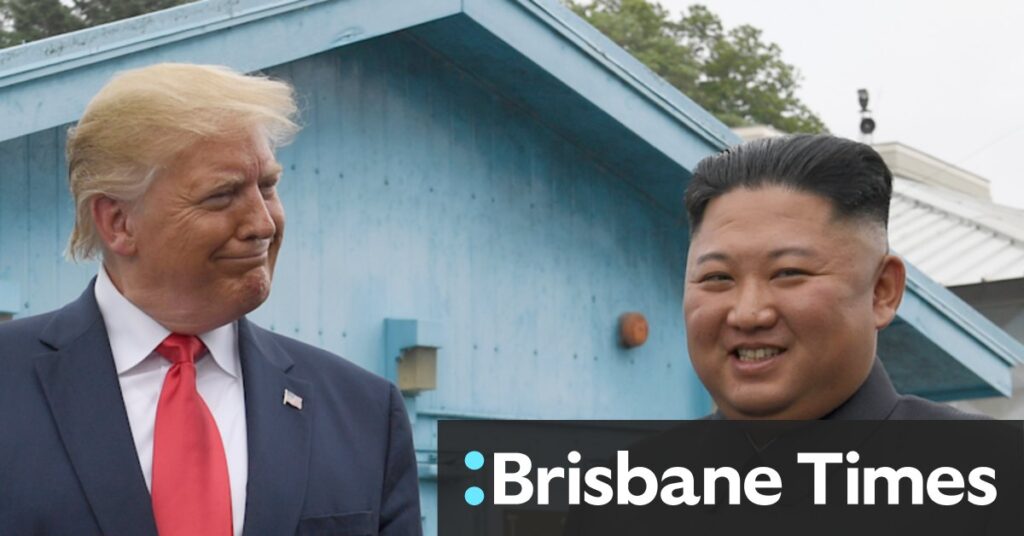
In a striking symbol of a firming anti-Western bloc, North Korean leader Kim Jong-un made a rare global appearance alongside Chinese President Xi Jinping and Russian President Vladimir Putin at a military parade in Beijing this month. This event marks a significant moment for North Korea, as it seeks legitimacy from its powerful allies.
Meanwhile, the Korean Peninsula remains a region of high tension. For 70 years, tens of thousands of troops have patrolled either side of the Demilitarized Zone (DMZ), with both North and South Korea still technically in a state of war, each claiming to be the sole legitimate government of the entire peninsula.
Life on the Border: A Village Under Military Watch
Yugok-ri, a frontline village established in 1973 by South Korea’s authoritarian president Park Chung-hee, remains under strict military control. More than two hours’ drive from Seoul, it lies within the Civilian Control Line, a perimeter heavily guarded by military checkpoints. Residents and their families must obtain special permission to enter.
Village leader Han Ho-hyeon, 64, who moved to Yugok-ri as a child, expresses the villagers’ desire for autonomy. “We’ve endured 50-plus years of oppression. Now, no interference is our hope. No interference from soldiers, no checkpoints,” he says, under the watchful eyes of South Korean soldiers.
The village’s strategic location is underscored by the presence of a South Korean military guard overlooking both the North Korean territory and the local farmland where villagers cultivate crops like soybeans and rice. Despite the military oversight, the community maintains a semblance of rural life, though younger generations have largely moved away.
Shifting Geopolitics and Diplomatic Efforts
The geopolitical landscape surrounding the Korean Peninsula is evolving. South Korea’s President Lee has attempted to soften relations with North Korea, reversing the hardline policies of his predecessor. His administration has implemented measures such as banning balloon launches that scatter anti-Kim regime leaflets and repatriating North Korean fishermen.
However, these efforts have been met with resistance. Kim Yo-jong, sister and spokesperson of Kim Jong-un, has dismissed Seoul’s overtures as “delusion and a pipe dream.” Despite this, President Lee remains committed to dialogue, acknowledging that North Korea’s attitude “remains cold.”
In January 2024, Kim Jong-un officially abandoned North Korea’s peaceful unification vision, denouncing South Korea as the “principal enemy.” This marked a significant shift in North Korea’s stance, as Kim seeks to position his country as a key player on the global stage.
North Korea’s Nuclear Ambitions
Kim Jong-un’s appearance at the Beijing parade alongside Xi and Putin signals a bid for recognition of North Korea’s status as a nuclear power. The country views this recognition as a pathway to international acceptance and sanctions relief.
US and South Korean experts estimate North Korea possesses 50 to 90 nuclear warheads and is capable of producing 10 to 20 nuclear weapons annually.
South Korea’s President Lee has acknowledged this reality, suggesting that simply suppressing North Korea is no longer a viable solution. The potential resumption of talks between Kim and former US President Donald Trump could hinge on accepting North Korea’s nuclear program, a departure from previous negotiations.
Rachel Minyoung Lee, a senior fellow at the Stimson Centre, notes that North Korea’s current diplomatic efforts are aimed at building an alternative global order alongside China and Russia. This development raises concerns about a potential arms race in Asia, with implications for regional security.
The Fading Dream of Korean Unification
In Yugok-ri, the dream of Korean reunification persists among the elderly residents, though it seems increasingly distant. Village head Han expresses skepticism about achieving reunification in his lifetime, citing the cyclical nature of South Korea’s political landscape.
“When [former South Korean president] Moon Jae-in was in office, it sounded like reunification would come any moment. But then, when the conservatives came in, it felt like war could break out any moment,” Han reflects.
As the younger generation moves away and the population dwindles, the village faces an uncertain future. Yet, for those who remain, the hope for a unified Korea endures, even as geopolitical realities suggest otherwise.
The world now watches to see if a new round of negotiations between Kim Jong-un and Donald Trump could alter the course of history, or if North Korea’s nuclear ambitions will continue to shape the region’s future.






